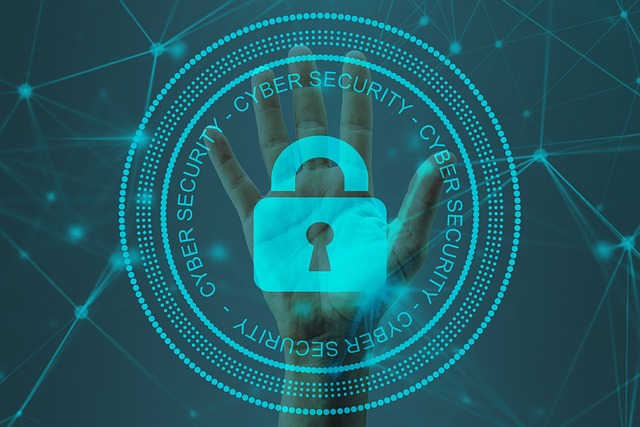Baltimore-Washington Metro Area: Navigating Cybersecurity in Today’s Business Terrain
The Baltimore-Washington Metro area is a prime hub for business and innovation in today’s interconnected world. Yet, with such prosperity comes inherent risks, especially in cybersecurity.
The Increasing Need for Cybersecurity in Modern Business
In an era where data has been hailed as the ‘new oil,’ safeguarding it becomes paramount. A breach can not only harm a business’s reputation but also its bottom line. Industry statistics show that as of 2023, cybercrimes have led to an annual loss of over $6 trillion globally, with businesses in the Baltimore-Washington Metro area facing increasingly sophisticated attacks.
“The landscape of threats is evolving rapidly. Staying a step ahead requires not just technology but also a proactive mindset,” remarks Ashu Bhoot from Washington DC IT Services firm Orion Networks.
Tracing Back: The Origins of Cybersecurity Awareness Month
Established in 2004, Cybersecurity Awareness Month aims to educate the public and businesses about the importance of cybersecurity. Over the years, it has expanded, echoing the increasing complexity and volume of cyber threats.
Aaron Kane of Chicago IT services company CTI Technology reflects on its significance: “Cybersecurity Awareness Month isn’t just a reminder but a beacon, emphasizing the importance of keeping our virtual territories guarded. With its myriad of businesses, the Baltimore-Washington corridor is particularly susceptible and thus must remain vigilant.”
Critical Measures for Businesses in the Baltimore-Washington Metro Area
The cybersecurity landscape is as dynamic as it is threatening. For businesses in the Baltimore-Washington Metro Area, staying proactive is more than just a strategy—it’s a survival imperative. Here’s a deeper look into the essential measures:
- Staying Updated: Regularly refreshing software, OS, and apps is not a mere recommendation—it’s a mandate. Each update often patches known vulnerabilities. Without these, you’re leaving the door wide open for cyber intruders.
- Team Education: Having an IT team that understands cybersecurity is not enough. Every employee should have basic knowledge, from the CEO to the newest intern. Periodic workshops and training sessions can inform staff about the latest threats and countermeasures, making them the first line of defense against phishing and other deceptive tactics.
- Multi-Factor Authentication (MFA): In today’s era, passwords aren’t robust enough defenses. MFA adds layers, ensuring that even if one barrier is breached, others are in place. This significantly reduces unauthorized access, as hackers need more than just login credentials.
- Routine Backups: The importance of backing up data cannot be overstated. In instances of ransomware attacks, businesses can be left paralyzed. Having a recent backup means operations can be quickly restored without capitulating to the hacker’s demands.
- Firewall and Anti-Malware Tools: These are your digital sentinels. They inspect incoming and outgoing traffic, blocking suspicious activities and malware. With evolving threats, ensuring these tools are updated with the latest definitions is crucial.
- Network Compartmentalization: Think of this as having different compartments in a ship. If one gets flooded, the entire ship doesn’t sink. By segmenting your network, a breach in one area won’t necessarily compromise the entire system.
- Access Control: Limiting who can access what information is a foundational security principle. Not every employee needs to access all data. Implementing stringent access controls ensures that sensitive data is only accessible to those requiring it for their roles.
- Regular Security Checks: Routine cybersecurity audits can unearth vulnerabilities that might have gone unnoticed. By regularly assessing your digital infrastructure, you can preemptively tackle weak points before they’re exploited.
- Incident Response Blueprint: Despite all precautions, breaches can happen. A clear, structured response plan ensures that the aftermath of any security incident is handled efficiently, minimizing damage and downtime.
- Staying Informed: The world of cyber threats is continuously evolving. Subscribing to cybersecurity news outlets, attending seminars, or being part of cybersecurity forums can help businesses stay ahead of potential threats.
By delving deep into these measures and adapting them effectively, businesses in the Baltimore-Washington Metro Area can fortify themselves against the ever-looming shadow of cyber threats. With preparation and vigilance, they can ensure their survival and thrive in today’s digital age.
The View from the Ground
While measures and protocols are essential, insights from industry leaders provide a more holistic picture. Dennis Kolkmeyer from LK Tech, a leading Cincinnati IT services company, notes, “The key isn’t just about deflecting threats but cultivating a culture where cybersecurity is everyone’s responsibility.”
Ashu Bhoot adds, “In the Baltimore-Washington region, where businesses are interconnected, a breach in one can have a ripple effect. Collaboration, alongside individual protection measures, is crucial.”
Aaron Kane emphasizes the role of continuous learning: “The cyber realm changes daily. Education, updates, and adaptability are the triad for cyber resilience.”
Conclusion
With its bustling business activity, the Baltimore-Washington Metro area is a beacon of opportunity. Yet, with great opportunity comes responsibility—ensuring that data and systems remain untainted in a world teeming with cyber threats. As Cybersecurity Awareness Month unfolds, let’s remember its essence: fortifying our defenses and fostering a culture of collective cybersecurity vigilance.
Stuart Crawford serves as Managing Partner with Ulistic LP, a specialty MSP Marketing firm focused on information technology marketing and business development. He brings a wealth of knowledge and experience pertaining to how technology business owners and IT firms can use marketing as a vehicle to obtain success.

